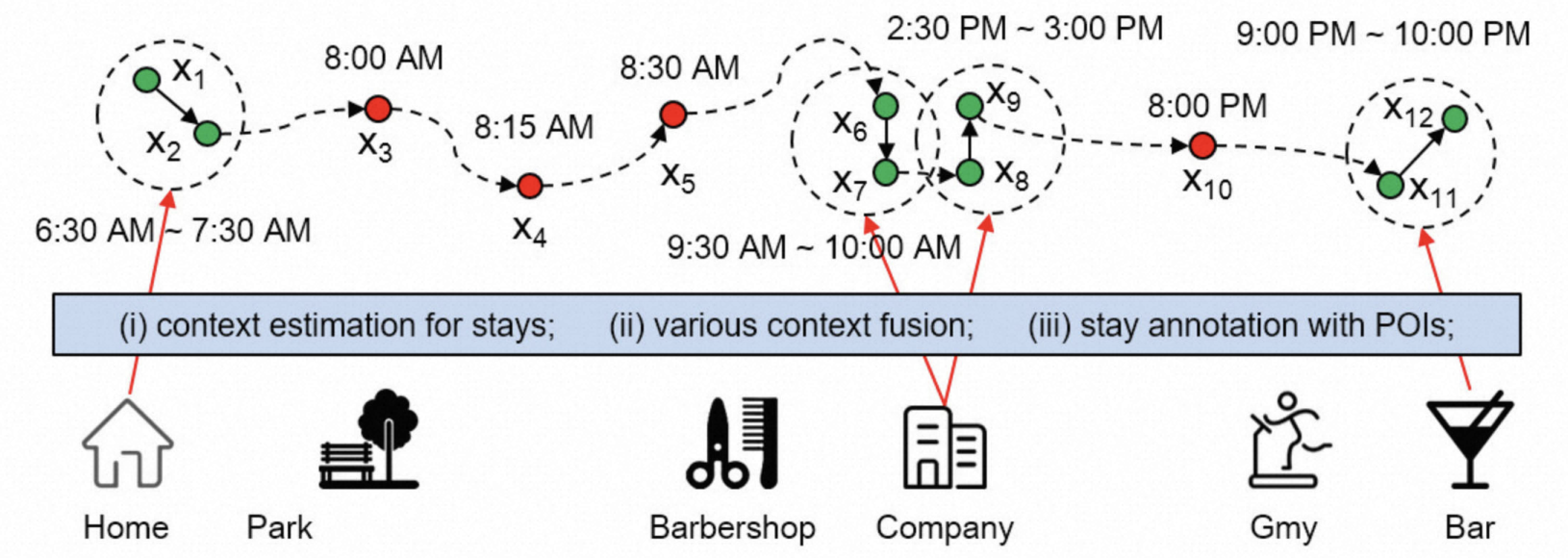Graph- and Relation-Centric Represenation Learning
TMC (1), ICDE (1), TKDD (1)

[TMC-2022] NCF: A Neural Context Fusion Approach to Raw Mobility Annotation
Understanding human mobility patterns at the point-of-interest (POI) scale plays an important role in enhancing business intelligence in mobile environments. While large efforts have been made in this direction, most studies simply utilize POI check-ins to mine the concerned mobility patterns, the effectiveness of which is usually hindered due to data sparsity. To obtain better POI-based human mobility for mining, in this paper, we strive to directly annotate the POIs associated with raw user-generated mobility records. We propose a neural context fusion approach which integrates various context factors in people's POI-visiting behaviors. Our approach evaluates the preference and transition factors via representation learning. Notably, we incorporate an attention mechanism to deal with the randomized transitions in raw mobility. The domain knowledge factors, i.e., distance, time and popularity, remain effective and our approach further includes them from a data-driven perspective. Factors are automatically fused with a feed-forward neural network. Furthermore, we exploit a multi-head architecture to enhance the model expressiveness. Using two real-life data sets, we conduct our experimental study and find that our approach consistently outperforms the state-of-the-art baselines by at least 32 percent in accuracy. Besides, we demonstrate the utility of the obtained POI-based human mobility with a POI recommendation example.

[ICDE-2016] An Embedding Approach to Anomaly Detection
Network anomaly detection has become very popular in recent years because of the importance of discovering key regions of structural inconsistency in the network. In addition to application-specific information carried by anomalies, the presence of such structural inconsistency is often an impediment to the effective application of data mining algorithms such as community detection and classification. In this paper, we study the problem of detecting structurally inconsistent nodes that connect to a number of diverse influential communities in large social networks. We show that the use of a network embedding approach, together with a novel dimension reduction technique, is an effective tool to discover such structural inconsistencies. We also experimentally show that the detection of such anomalous nodes has significant applications: one is the specific use of detected anomalies, and the other is the improvement of the effectiveness of community detection.